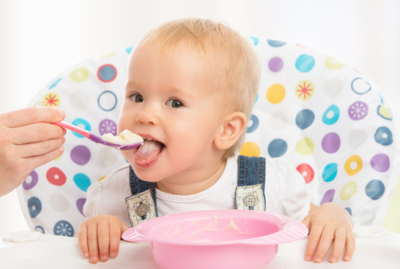
There are a lot of choices to make as a parent these days, but the first feeding milestones might be the most important. Families who care about living well start making their homes support healthy eating habits at a very young age. Knowing when and how babies learn to feed themselves can turn mealtime from a stressful mess into special times with the family.
The change from eating purees with a spoon to eating on your own is about more than just getting enough food. When babies begin transitioning to finger foods, they're developing crucial motor skills, learning food preferences, and establishing eating patterns that will influence their relationship with food for years to come. This stage of development often emerges between about 6 and 10 months depending on readiness; many babies develop a pincer grasp around 8–10 months, when babies can coordinate their movements enough to pick up small things with their thumb and forefinger.
Knowing When a Child Is Ready to Learn
Self-feeding readiness shows up in certain behaviors, not on a calendar. The American Academy of Pediatrics says that age shouldn't be the only thing you look at. Instead, you should look for signs of interest.
When babies are ready for finger foods, they usually:
Reach for their parents' food
Show signs of hunger soon after finishing purees
Demonstrate they can hold small things with their developing pincer grasp
Around 9 to 11 months, most families notice that their babies are interested in textures and are getting better at coordinating their hands and eyes. At this age, babies between 7 and 11 months usually show you they're ready to eat more adult food by trying to take it from you. This natural curiosity means it's time to give them finger foods that are the right size.
Making the Best Environment
To be able to feed yourself well, you need more than just the right foods. The way things are set up physically has a big effect on how well a child can learn and explore.
Supportive seating: High-quality high chairs with the right support let babies focus on the hard job of coordinating their hand movements while staying seated with good head control, as recommended by the AAP and CDC.
Easy-to-clean tools: Consider buying feeding tools that make cleaning up easier and encourage your child to explore.
Soft, easy-to-mash foods like steamed sweet potato cubes, ripe banana pieces, well-cooked pasta, and soft protein sources are the best first finger foods. The Centers for Disease Control and Prevention says that to help avoid choking, you should make foods that easily dissolve in saliva and don't need to be chewed. Each piece of food should be small enough so that a child can't choke on it but big enough for them to hold on to.
More Than Just Basic Nutrition
Self-feeding development goes far beyond just getting enough calories. During this stage, babies get to try different textures, tastes, and temperatures of food while also improving their motor skills. With appropriate guidance, self-feeding can be nutritionally adequate and doesn't appear to raise choking risk compared with traditional spoon-feeding.
Some parents find meal delivery services offering baby-friendly finger foods helpful during this developmental stage, while others prefer preparing homemade options or selecting appropriate store-bought finger foods. The key is ensuring foods are developmentally appropriate in size and texture, whether they're homemade steamed vegetables, store-bought puffs, or prepared meals designed for self-feeding. When parents have access to options that meet their child's developmental needs (regardless of the source), the transition becomes more manageable.
You need to be patient and okay with things being messy. Babies learn by exploring, which means that food will end up on their faces, floors, and furniture. This phase of exploration is very important for learning how to chew properly, what foods you like, and how to accept new foods. Families can better deal with this messy but important time of growth by setting realistic goals.
Helping with Long-Term Success
Eating habits that last a lifetime start with early experiences of self-feeding. Babies who touch and taste different things during this important time often become more adventurous eaters when they are toddlers and kids. The secret is to give babies a variety of healthy choices and let them choose how much and how fast they want to eat.
Parents shouldn't rush this change or compare how their baby is doing to how other babies are doing. Every child grows and develops at their own pace, and some may be ready for finger foods sooner or later than what is usually thought. Babies get enough nutrition and learn to be independent by continuing to offer both finger foods and the right purees.
When there are questions about a child's development or food safety, professional help can be very helpful. Pediatric nutritionists and feeding specialists can give tailored advice based on the needs of each child and the situation of the family.
One of the most important steps in early childhood development is learning to feed oneself. Families can turn this time into positive experiences that help with both short-term and long-term healthy eating habits by learning about the developmental process, making supportive environments, and setting realistic goals. Investing in good food, the right tools, and patient guidance during this time pays off in the long run for kids' relationships with food and family mealtime traditions.


(0) comments
We welcome your comments
Log In
Post a comment as Guest
Keep it Clean. Please avoid obscene, vulgar, lewd, racist or sexually-oriented language.
PLEASE TURN OFF YOUR CAPS LOCK.
Don't Threaten. Threats of harming another person will not be tolerated.
Be Truthful. Don't knowingly lie about anyone or anything.
Be Nice. No racism, sexism or any sort of -ism that is degrading to another person.
Be Proactive. Use the 'Report' link on each comment to let us know of abusive posts.
Share with Us. We'd love to hear eyewitness accounts, the history behind an article.